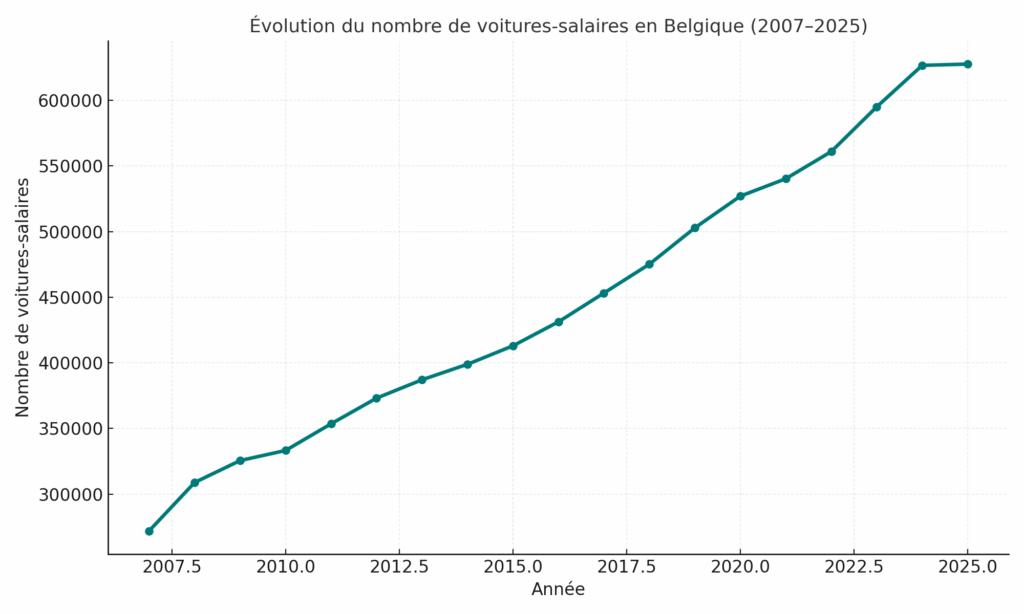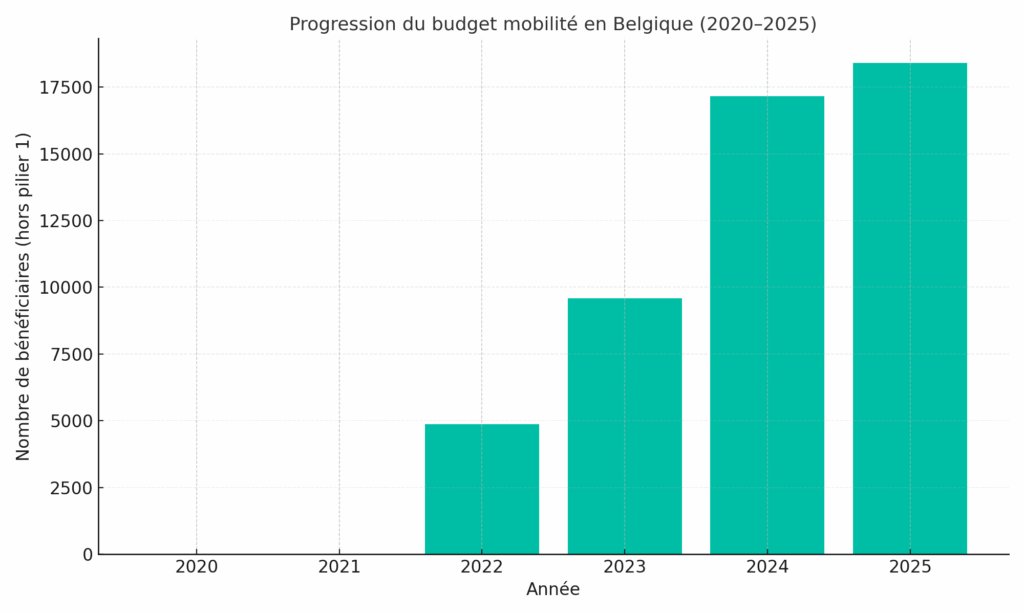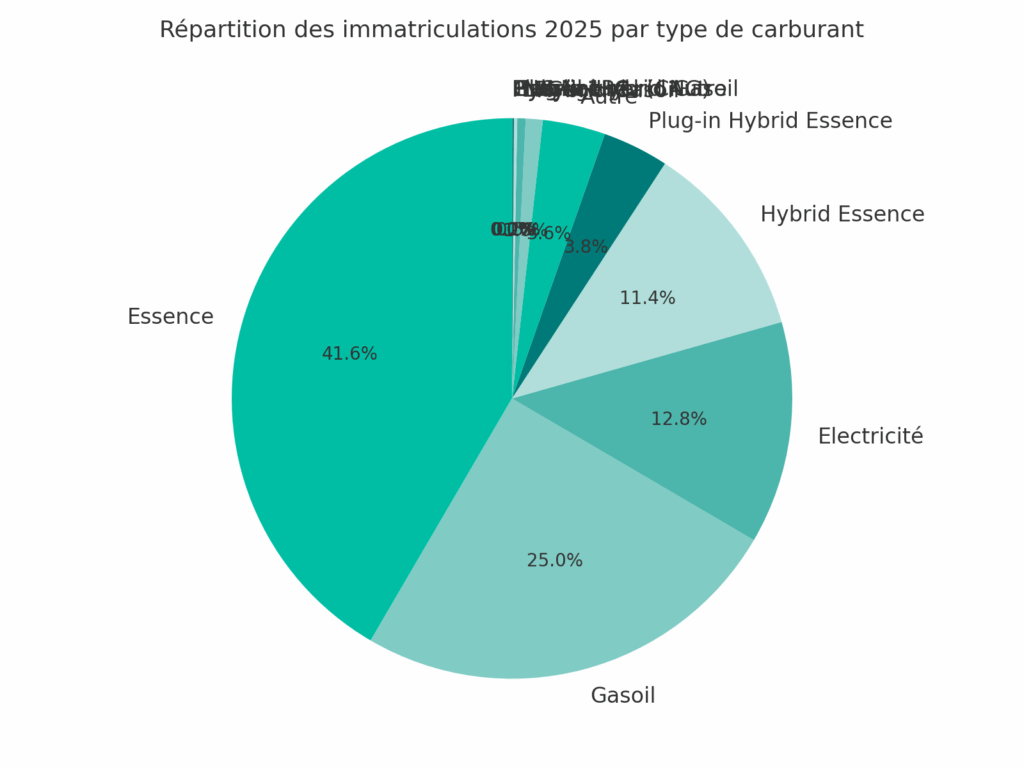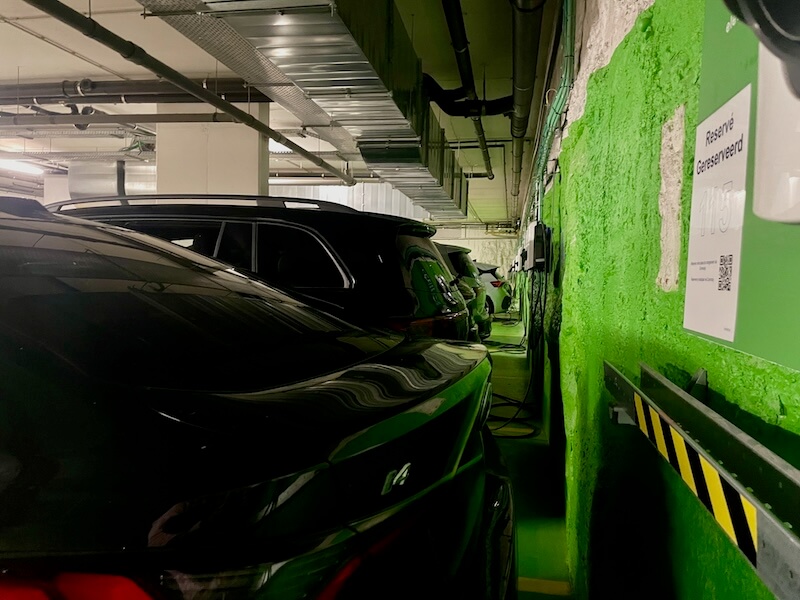Company cars, mobility budgets and public transport: finding the new balance
Introduction – 2025, a new era for corporate mobility
Belgium’s corporate mobility landscape is changing fast.
For the first time in more than fifteen years, official data from the Federal Public Service Mobility and Transport (SPF Mobilité) mark a turning point: the growth of company cars has come to a halt, while mobility budgets continue to gain traction.
At the same time, SNCB and Infrabel are accelerating the transformation of public transport, driving the country’s sustainable mobility ambitions.
For HR, Fleet, Finance, Facilities and Mobility Managers, these shifts are anything but anecdotal. They signal a structural rebalancing of mobility policies — at the intersection of taxation, electrification, and employees’ changing expectations.
Company cars: the end of continuous growth
According to the Federal Public Service Mobility and Transport, “In 2025, for the first time since the publication of detailed data, the number of company cars has stagnated.”
Between Q1 2024 and Q1 2025, growth reached only 0.2%, compared to an average 5% per year over the past 17 years.
In total, around 627,600 employees in Belgium currently have a company car — 14.9% of all employees.

Chart 1 – Evolution of company cars in Belgium (2007–2025)
This stagnation reflects several trends:
- The maturity of the model: company cars remain popular, but growth has plateaued.
- The impact of green taxation: the gradual phase-out of benefits for combustion engines pushes companies to rethink their policies.
- The electrification of fleets: new cost and infrastructure trade-offs are reshaping fleet management.
For fleet managers, 2025 marks a transition year — balancing cost control with the shift towards electrified, low-emission fleets.
The mobility budget takes root
Introduced by law on 17 March 2019, Belgium’s mobility budget allows employers to offer employees an alternative to the company car, built around three pillars:
- A more environmentally friendly car,
- Sustainable mobility options (public transport, cycling, nearby housing),
- Partial conversion into cash, subject to a social contribution.
In 2024, 18,516 employees benefited from a mobility budget, including 17,157 without a company car — that’s still less than 0.5% of all employees, but nearly 3% of all mobility benefit recipients.
The growth is slow but steady, particularly in large corporations and service sectors.

Chart 2 – Growth of the mobility budget in Belgium (2020–2025)
The mobility budget appeals through its flexibility and alignment with CSR goals.
It also meets a demand for personalization — employees increasingly want to choose how they move, based on their lifestyle, values, and workplace location.
For HR, it’s a lever for attraction and retention. For Finance, it’s a challenge to manage — combining vehicles, budgets, and fiscal frameworks within one coherent system.
Greening the vehicle fleet: 2025 in numbers
Registration data from the SPF Mobility for 2025 confirm this transformation.
Between January and September, the share of electric vehicles keeps rising, while diesel continues to decline.
Petrol remains dominant, but the trend is clear: Belgium’s vehicle fleet is steadily moving towards electrification.

Chart 3 – 2025 vehicle registrations by fuel type
Companies are leading the charge: most electric registrations come from legal entities (corporations, leasing companies, fleets).
The corporate world is driving the green transition, boosted by tax deductibility for zero-emission vehicles and the expansion of charging infrastructure at offices and company car parks.
SNCB & Infrabel: public drivers of sustainable mobility
The report “Performance Dialogues 2025 – SNCB and Infrabel Results 2024” highlights the progress made by both public companies in fostering sustainable transport:
- Improved punctuality and customer satisfaction,
- Major investments in railway modernization, signaling and digitalization,
- A focus on intermodal mobility — combining train, bike, carpooling, and shared mobility.
These results underscore the central role of rail in reducing emissions and road congestion.
For companies, this represents a strategic opportunity: encouraging employees to adopt combined mobility (train pass + e-bike, park & ride, flexible hours) fits perfectly within the logic of the mobility budget and corporate sustainability goals.
Implications for corporate decision-makers
These 2025 trends call for tangible action across departments:
HR and Compensation
- Integrate the mobility budget into flexible reward plans.
- Train HR teams to manage its administrative and fiscal aspects.
- Use mobility as an employer branding tool.
Fleet Management
- Prepare for the end of tax deductibility for combustion vehicles (2026).
- Rethink fleet renewal strategies.
- Monitor the TCO (Total Cost of Ownership) of electric vehicles, including charging infrastructure.
Finance & Purchasing
- Budget the transition — higher upfront costs, lower operational ones.
- Explore green leasing and insurance options.
Facilities & Mobility Managers
- Plan the deployment of charging stations.
- Encourage intermodality and combined subscriptions.
- Track and report on carbon reduction and adoption rates.
Conclusion – Towards more balanced corporate mobility
2025 marks a symbolic turning point: the company car is no longer the sole focus of corporate mobility.
With stagnant numbers, rising mobility budgets and rapid electrification, a new equilibrium is taking shape.
Public policies, fiscal incentives and employee behavior all point toward a more sustainable, flexible and responsible mobility model.
For Belgian companies, the challenge is clear: move from a car-based model to an integrated mobility strategy encompassing all modes of transport.
🚀 Next Mobility supports your transition
At Next Mobility, we help organizations transform their corporate mobility strategies by providing:
- Fleet analysis and optimization,
- Mobility budget implementation,
- HR and fiscal support,
- Practical, sustainable mobility solutions.
To take your strategy further,
👉 get in touch with us directly.
